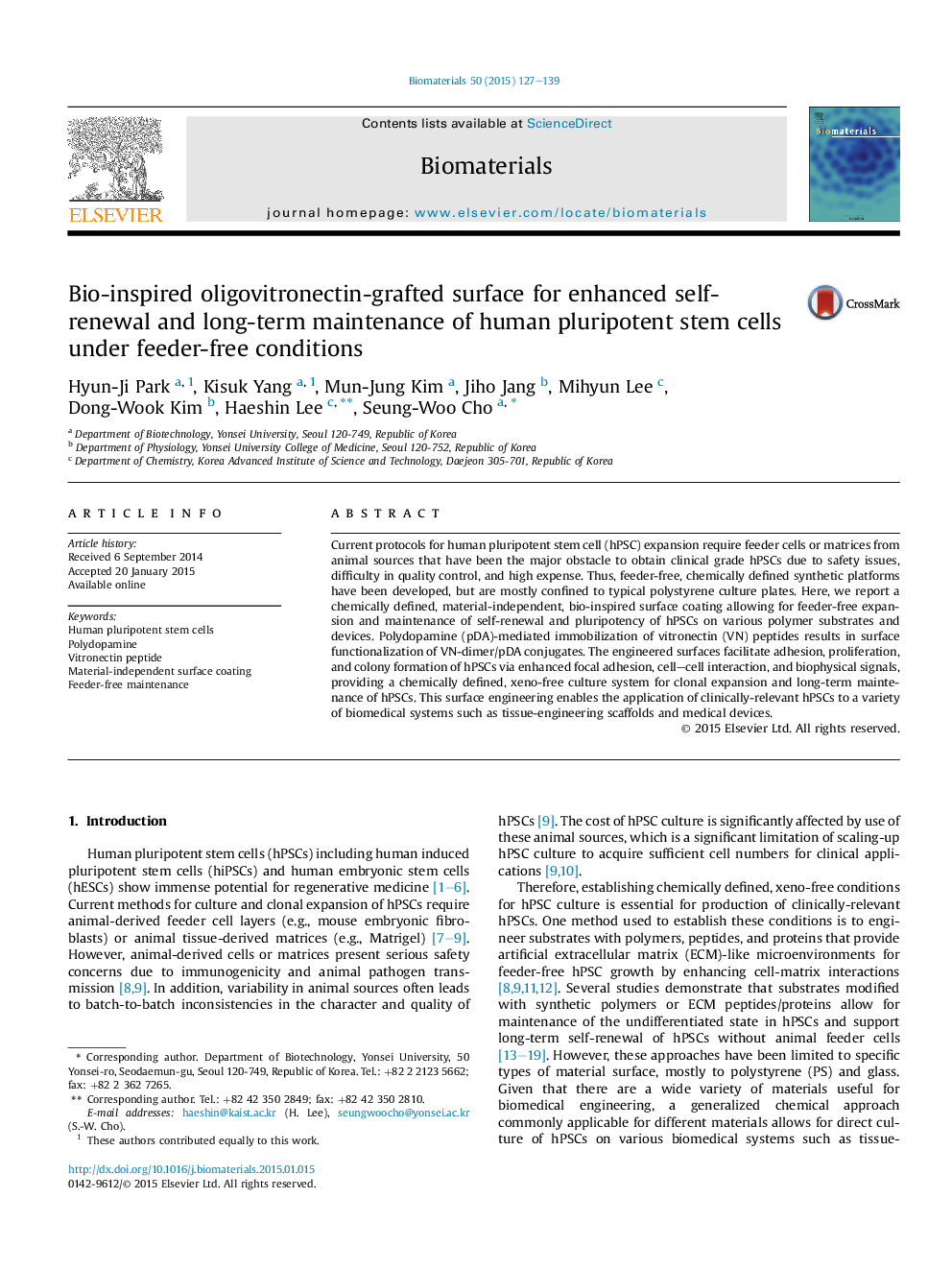| Article ID | Journal | Published Year | Pages | File Type |
|---|---|---|---|---|
| 6486120 | Biomaterials | 2015 | 13 Pages |
Abstract
Current protocols for human pluripotent stem cell (hPSC) expansion require feeder cells or matrices from animal sources that have been the major obstacle to obtain clinical grade hPSCs due to safety issues, difficulty in quality control, and high expense. Thus, feeder-free, chemically defined synthetic platforms have been developed, but are mostly confined to typical polystyrene culture plates. Here, we report a chemically defined, material-independent, bio-inspired surface coating allowing for feeder-free expansion and maintenance of self-renewal and pluripotency of hPSCs on various polymer substrates and devices. Polydopamine (pDA)-mediated immobilization of vitronectin (VN) peptides results in surface functionalization of VN-dimer/pDA conjugates. The engineered surfaces facilitate adhesion, proliferation, and colony formation of hPSCs via enhanced focal adhesion, cell-cell interaction, and biophysical signals, providing a chemically defined, xeno-free culture system for clonal expansion and long-term maintenance of hPSCs. This surface engineering enables the application of clinically-relevant hPSCs to a variety of biomedical systems such as tissue-engineering scaffolds and medical devices.
Related Topics
Physical Sciences and Engineering
Chemical Engineering
Bioengineering
Authors
Hyun-Ji Park, Kisuk Yang, Mun-Jung Kim, Jiho Jang, Mihyun Lee, Dong-Wook Kim, Haeshin Lee, Seung-Woo Cho,
